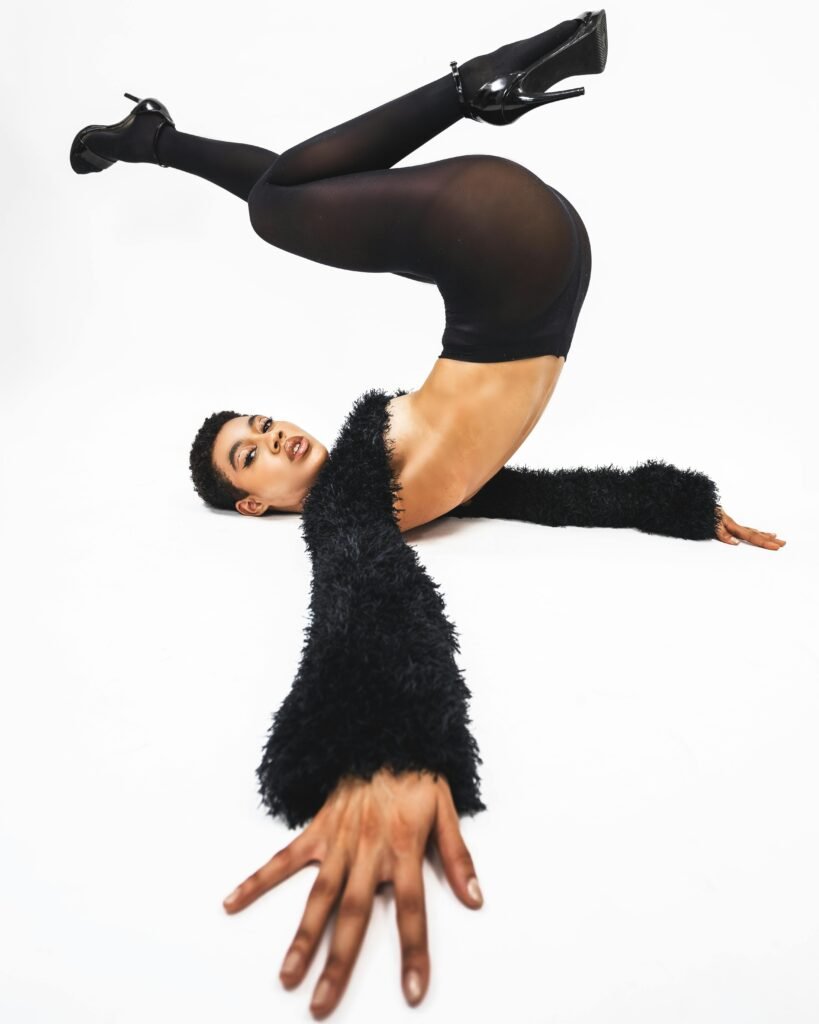If you’re looking to improve your shooting skills and become more accurate and precise, then this article is a must-read for you! Packed with expert tips and techniques, you’ll discover invaluable strategies to take your shooting game to the next level. Whether you’re a seasoned marksman or just starting out, these tips will help you enhance your accuracy and precision. So grab your weapon of choice, get ready to level up your shooting skills, and let’s dive into the world of expert marksmanship.

This image is property of images.pexels.com.
Improving Grip and Stance
Choosing the right firearm grip
When it comes to improving your shooting skills, one of the crucial factors to consider is selecting the right firearm grip. The grip determines how well you can control your firearm and maintain a stable shooting platform. There are various types of grips available, such as the traditional overlapping grip or the thumbs-forward grip. Experiment with different grips to find the one that feels most comfortable and provides the best control over your firearm.
Proper hand positioning
In addition to choosing the right grip, proper hand positioning is essential for accuracy and precision. Your dominant hand should have a firm but relaxed grip on the firearm, while your non-dominant hand provides support and stability. Keep your fingers away from the trigger until ready to shoot to prevent unintentional discharges. Practice maintaining a consistent hand position to ensure your shots are consistent and on target.
Understanding shooting stances
A solid shooting stance is the foundation for accuracy and control. There are three main shooting stances: the Isosceles stance, the Weaver stance, and the Modified Weaver stance. The Isosceles stance involves standing squarely towards the target with both arms extended. The Weaver stance has a more angled position with the dominant foot back and the non-dominant foot forward. The Modified Weaver stance is a variation that combines elements of both. Experiment with different stances and find the one that feels most comfortable and provides the best stability for your shooting style.
Mastering the three main stances
To truly enhance your shooting skills, it’s essential to master all three main shooting stances. Each stance offers different advantages depending on the situation, and being proficient in multiple stances allows you to adapt to different shooting scenarios. Practice each stance consistently to build muscle memory and improve your overall shooting performance. Remember, a solid grip and stance provide a stable shooting platform, leading to improved accuracy and precision.
Developing Sight Alignment
Importance of sight alignment
A crucial aspect of shooting accuracy is sight alignment. Proper sight alignment ensures that your sights are aligned with the target, allowing you to hit your desired point of aim. The front sight should be centered within the rear sight, with equal spacing on both sides. This alignment ensures that your shots will be more accurate and consistent. Neglecting proper sight alignment can result in missed shots and frustration. Focus on mastering sight alignment to greatly improve your shooting skills.
Adjusting rear and front sights
To achieve precise sight alignment, it’s important to understand how to adjust both rear and front sights. Depending on your firearm, you may have the ability to make adjustments to ensure optimal alignment. Familiarize yourself with the adjustment mechanisms and make necessary changes to align your sights accurately. Regularly check and adjust your sights to account for any changes or inconsistencies that may affect your shooting accuracy.
Using sight picture for accuracy
Sight picture refers to the alignment of your sights in relation to your target. It involves not only sight alignment but also the position of the front sight within your field of view. Proper sight picture allows you to focus on the front sight while still being aware of your target and surroundings. Practice acquiring and maintaining an accurate sight picture to improve your shooting accuracy. Remember, proper sight picture is crucial for consistently hitting your target.
Practicing with iron sights and scopes
To truly develop your sight alignment skills, it’s important to practice shooting with both iron sights and scopes. Iron sights provide a traditional and reliable method of aiming, while scopes offer magnification for improved target acquisition. Each requires a slightly different approach to sight alignment and sight picture. Regularly switch between shooting with iron sights and scopes to become proficient in both. This versatility will make you a more adaptable and accurate shooter in various situations.

This image is property of images.pexels.com.
Mastering Trigger Control
Understanding trigger pull
Mastering trigger control is essential for precision shooting. Understanding how trigger pull affects your shots is crucial to consistently hitting your target. The trigger pull refers to the force required to activate the firearm’s firing mechanism. A smooth, controlled trigger pull minimizes the disruption to your aim and allows for more accurate shots. Practice understanding the nuances of your firearm’s trigger pull and focus on developing a consistent and deliberate trigger control technique.
Proper finger placement on the trigger
Correct finger placement on the trigger is vital for precise control. Ideally, you want to place the pad of your index finger on the trigger, not the joint or the tip. This provides the most control and allows for a smoother and more controlled trigger pull. Experiment with different finger placements to find what feels most natural and allows you to maintain a consistent trigger control technique.
Maintaining a consistent trigger squeeze
Consistency is key when it comes to trigger control. Maintaining a consistent trigger squeeze throughout the entire firing process is essential for accuracy and precision. Avoid jerking or slapping the trigger, as these movements can significantly impact your aim. Instead, practice applying steady and even pressure with your trigger finger. By developing muscle memory and consistently applying the same amount of pressure, you’ll greatly improve your shooting accuracy.
Dry-fire practice for trigger control
One effective way to enhance trigger control is through dry-fire practice. Dry-fire refers to practicing your trigger control technique without live ammunition. By focusing solely on your trigger pull, you can consciously control your finger placement and the pressure applied to the trigger. Regularly incorporating dry-fire practice into your training routine allows you to develop and refine your trigger control skills without the noise and recoil of live-fire shooting.
Breathing Techniques
Controlling breath during shooting
Breathing plays a crucial role in shooting accuracy. Properly controlling your breath eliminates erratic movement and allows for a steadier aim. Before taking your shot, take a deep breath and exhale slowly. This slows down your heart rate and relaxes your body. It’s important to find a breathing pattern that works best for you and gives you the most control over your aim. Remember, a calm and controlled breath is essential for precision shooting.
Using breath to steady aim
Utilizing your breath to steady your aim is a fundamental technique in shooting. When you reach the natural respiratory pause after exhaling, your body experiences a brief moment of stillness. This pause can provide the perfect opportunity to take your shot, as it minimizes any movement caused by breathing. Practice timing your shots with this natural pause to maximize your shooting accuracy. By synchronizing your breath with your trigger pull, you’ll be able to achieve better control over your aim.
Implementing natural respiratory pause
The natural respiratory pause, also known as the breath hold, is crucial for maintaining a steady aim. This brief moment of pause occurs at the end of exhalation when your diaphragm relaxes before inhaling again. By taking your shot during this moment, you minimize any movement caused by breathing. It’s important to practice timing and recognizing this natural pause to capitalize on its benefits. Implementing the breath hold technique into your shooting routine will greatly improve your accuracy.
Advantages of breathing techniques
Proper breathing techniques offer numerous advantages in shooting. By controlling your breath, you not only steady your aim but also increase your focus and concentration. Regulating your breathing reduces unnecessary movements and helps you maintain a calm and composed mindset, even during high-stress shooting situations. Incorporating breathing techniques into your training regimen allows you to develop a consistent shooting rhythm and greatly enhance your overall shooting accuracy.

This image is property of images.pexels.com.
Focusing on Sight Picture
The relationship between sight picture and accuracy
Sight picture plays a pivotal role in shooting accuracy. It refers to the alignment and focus of your sights in relation to your target. A proper sight picture allows you to accurately aim at your intended point of impact. By focusing on the front sight while maintaining awareness of the target and surroundings, you achieve better precision and control. Understanding the critical relationship between sight picture and accuracy is key to becoming a proficient shooter.
Maintaining focus on the front sight
To maximize your shooting accuracy, it’s essential to maintain focus on the front sight. Your eyes naturally want to shift focus to the target, but by consciously keeping your attention on the front sight, you minimize distractions and improve your aim. Practice training your eyes to lock onto the front sight and maintain sharp focus throughout the shot. With consistent practice, maintaining focus on the front sight will become second nature, resulting in improved shooting accuracy.
Importance of peripheral vision
While maintaining focus on the front sight is crucial, it’s also important to utilize your peripheral vision. Peripheral vision allows you to remain aware of your surroundings while still maintaining focus on the front sight. This peripheral awareness is especially important in self-defense situations where situational awareness is paramount. Incorporate exercises that incorporate both keen focus on the front sight and awareness of your surroundings to enhance your shooting skills.
Enhancing sight picture through concentration
To fully enhance your sight picture and overall shooting accuracy, concentration is key. By eliminating distractions and focusing solely on the task at hand, you can achieve a heightened level of precision. Practice concentration exercises, such as visualizing your shot before taking it or blocking out external noise and distractions. By honing your ability to concentrate, you’ll greatly improve your sight picture and effortlessly maintain focus on the front sight, resulting in improved shooting accuracy.
Developing Muscle Memory
Repetition and muscle memory
Repetition is the key to developing muscle memory, which is crucial for consistent shooting accuracy. By repeatedly performing the same shooting techniques and exercises, you train your muscles to act automatically and instinctively. This muscle memory allows you to execute proper shooting techniques without having to consciously think about each step. Regularly practice fundamental shooting drills to reinforce the correct movements and techniques. Over time, your muscle memory will improve, resulting in greater shooting accuracy.
Importance of proper technique
When developing muscle memory, it’s essential to focus on proper technique. Ingraining poor habits will only hinder your shooting accuracy. Start with the basics and ensure that each movement is performed correctly. Pay attention to your grip, stance, sight alignment, trigger control, and all other aspects of shooting. By consistently practicing the correct technique, you’ll reinforce the right muscle memory and set a solid foundation for accurate shooting.
Building muscle memory through drills
Incorporating drills into your training routine is an effective way to build muscle memory and improve shooting accuracy. Drills focus on specific aspects of shooting, such as grip, sight alignment, or target transitions, and allow you to repeat these movements until they become second nature. Consistently practice a variety of drills to target different skills and techniques. By regularly challenging yourself with drills, you’ll enhance your muscle memory and develop the precision and consistency necessary for accurate shooting.
Training with simulators and dry-fire exercises
Simulators and dry-fire exercises are valuable tools for developing muscle memory and enhancing shooting skills. Simulators provide a realistic shooting experience without the need for live ammunition. They allow you to practice various scenarios, improving your decision-making skills and muscle memory. Dry-fire exercises involve practicing your shooting technique without live ammunition, making it an excellent opportunity to solely focus on your movements and refine your muscle memory. Incorporating simulators and dry-fire exercises into your training regimen provides the opportunity to train in a safe, controlled environment and accelerate your improvement.
Controlling Recoil
Understanding recoil and its impact
Recoil is the backward movement of a firearm when discharged. Understanding recoil and its impact on your shooting is crucial for accuracy and control. Recoil introduces movement in the firearm, which can affect your aim and stability. Different firearms and ammunition loads produce varying levels of recoil. Become familiar with the recoil characteristics of your firearm and practice controlling it to achieve better shooting accuracy.
Proper grip and stance to manage recoil
A proper grip and stance are essential for managing recoil effectively. By establishing a firm grip and a stable shooting platform, you can mitigate the effects of recoil. Ensure that your grip allows for proper control and consistency during recoil. Additionally, maintaining a solid shooting stance with a slight forward lean helps absorb and distribute recoil energy more effectively. Consistently practice your grip and stance to develop the strength and stability needed to manage recoil efficiently.
Recoil mitigation techniques
While it’s impossible to eliminate recoil entirely, various techniques can help mitigate its effects on your aim and accuracy. One technique is to slightly push forward with your non-dominant hand during the firing sequence, countering the backward force of recoil. This technique helps maintain a more stable shooting platform and reduces muzzle rise. Additionally, utilizing compensators or muzzle brakes can redirect gases and reduce felt recoil. Experiment with different techniques and equipment to find what works best for you in managing recoil effectively.
Managing rapid-fire recoil
In rapid-fire situations, controlling recoil becomes even more challenging. The rapid succession of shots can cause cumulative recoil, making it harder to maintain accuracy. To manage rapid-fire recoil, it’s crucial to maintain a consistent grip and stance throughout the firing sequence. Focus on quick follow-through and ensure you reset your grip after each shot, ready for the next one. By maintaining control and managing recoil in rapid-fire scenarios, you’ll be able to stay on target and improve your shooting accuracy.
Proper Follow-Through
Importance of follow-through in shooting
Follow-through is an often overlooked but critical aspect of shooting accuracy. Proper follow-through involves maintaining your shooting form after the shot has been fired, ensuring that you don’t disrupt your aim prematurely. By following through correctly, you allow the bullet to leave the barrel undisturbed, resulting in better accuracy. Practice emphasizing the importance of follow-through and make it a consistent part of your shooting routine.
Maintaining proper form during follow-through
During follow-through, it’s crucial to maintain proper shooting form. Avoid any jerky or excessive movements that may disrupt your aim. Hold your grip, maintain your shooting stance, and keep your sights aligned as much as possible. By consciously maintaining proper form during follow-through, you help ensure that all your shots are executed consistently and accurately.
Analyzing shot execution and correcting mistakes
Follow-through provides an opportunity to analyze your shot execution and identify any mistakes or errors. By reviewing your form and shot placement immediately after the shot, you can make necessary adjustments and corrections. Assess your grip, trigger control, sight alignment, and all other elements of your shooting technique. Pay attention to any deviations from your intended point of aim and work on correcting those mistakes during subsequent shots. By consistently analyzing your shot execution during follow-through, you’ll be able to continuously improve your shooting accuracy.
Drills for improving follow-through
Incorporating specific drills into your training routine allows you to specifically target and improve your follow-through technique. One such drill involves engaging a target and holding your aim for a few seconds after each shot, ensuring a complete follow-through. Another drill is focusing on maintaining a relaxed and stable shooting position through the entire firing sequence. By regularly practicing follow-through drills, you reinforce the importance of this technique and develop the consistency needed for improved shooting accuracy.
Boosting Mental Focus
Mental preparation and visualization
Mental preparation plays a vital role in shooting accuracy. Before heading to the range, take the time to mentally prepare yourself for the shooting session. Visualize yourself executing proper shooting techniques, hitting your desired points of aim, and maintaining focus throughout the process. By mentally rehearsing the correct movements and outcomes, you instill confidence and set the stage for a focused and successful shooting session.
Eliminating distractions and maintaining concentration
In order to achieve accuracy and precision, it’s crucial to eliminate distractions and maintain unwavering concentration. Shooting requires intense focus, and any external or internal distractions can significantly impact your performance. Find a quiet and controlled environment to practice shooting, away from distractions. Additionally, work on minimizing any mental distractions, such as negative thoughts or worries. By exhibiting strong mental discipline and maintaining concentration, you enhance your shooting accuracy and overall performance.
Managing stress and performance anxiety
Stress and performance anxiety can have a detrimental impact on shooting accuracy. Learning techniques to manage these stressors is essential for maintaining focus and achieving precision. Practice relaxation techniques, such as deep breathing and mindfulness exercises, to help calm your mind and regulate stress levels. Engaging in regular physical exercise and maintaining a healthy lifestyle can also contribute to stress reduction. Developing strategies to manage stress and performance anxiety will positively impact your shooting skills and allow you to perform at your best.
Utilizing mindfulness techniques
Mindfulness techniques offer powerful tools for enhancing mental focus and shooting accuracy. Incorporate mindfulness practices into your daily routine to improve your ability to stay present and fully immersed in the shooting experience. Engage your senses, focus on the sensations of shooting, and avoid getting caught up in thoughts about past or future shots. By practicing mindfulness, you cultivate a heightened sense of awareness and concentration, leading to improved shooting performance.
Seeking Professional Coaching
Benefits of professional shooting coaching
Working with a professional shooting coach offers numerous benefits that can greatly enhance your shooting skills. A coach brings expertise, experience, and personalized guidance to help you achieve your shooting goals. They can assess your technique, provide feedback, and offer tailored advice to address specific areas for improvement. Additionally, a coach can assist with refining your mental focus and developing a training plan to optimize your progression. Seeking professional shooting coaching is an investment in your shooting abilities and can significantly accelerate your journey towards accuracy and precision.
Finding qualified shooting instructors
When searching for a shooting instructor, it’s essential to find someone with the necessary qualifications and experience. Look for instructors who have certifications from reputable shooting organizations or those who have achieved notable accolades in shooting competitions. Ask for recommendations from other shooters or consult shooting forums for trusted recommendations. It’s important to find an instructor who aligns with your goals and style of shooting to ensure effective coaching and optimal progress.
Customized training programs
One of the advantages of working with a professional shooting coach is the ability to receive customized training programs. A coach can assess your current skill level, identify specific areas for improvement, and design a training plan tailored to your individual needs. This targeted approach ensures that you are working on the areas that will most benefit your shooting accuracy. With a customized training program, you can maximize your training time and see significant improvements in your shooting skills.
Receiving personalized feedback
Personalized feedback from a shooting coach is invaluable in improving your shooting accuracy. An experienced coach can identify even the smallest nuances in your technique, grip, stance, and other elements of shooting. They can provide real-time feedback, highlighting areas for improvement and offering specific advice on how to make adjustments. By receiving personalized feedback, you gain insights that can significantly enhance your shooting accuracy and precision.
In conclusion, developing accuracy and precision in shooting requires putting in effort and implementing a comprehensive approach. By improving your grip and stance, developing sight alignment, mastering trigger control, focusing on breath and sight picture, developing muscle memory, controlling recoil, practicing proper follow-through, boosting mental focus, and seeking professional coaching, you can significantly enhance your shooting skills. Consistency, practice, and a dedication to continuous improvement are key to attaining expert accuracy and precision in shooting.
